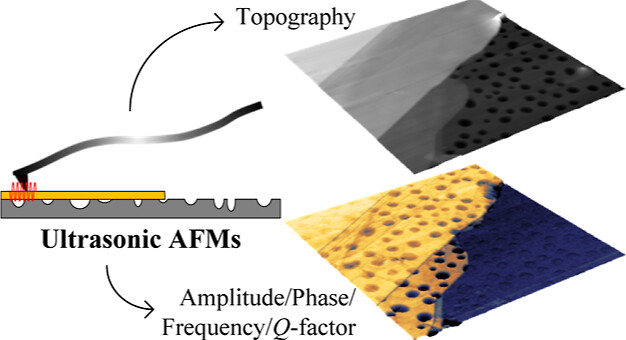Abstract
Techniques capable of evaluating the surface and subsurface mechanical properties on the nanoscale are crucial for the advancement of many fields of nanoscience and nanotechnology, including nanomaterials, micro/nano-electronics, and nanobiology. To this end, several techniques combining atomic force microscopy (AFM) and ultrasonic excitation/detection, as we refer them collectively as ultrasonic AFMs, have been developed and have drawn great attention. By mechanically modulating the contact between the AFM tip and the sample surface at ultrasonic frequencies and then analyzing the responses of the AFM cantilever, ultrasonic AFMs show the capabilities of nondestructively measuring the elastic and viscoelastic properties of surfaces on the nanoscale resolution of a few nanometers. Parameters including the elastic modulus and the loss tangent of a broad range of materials from soft polymers (similar to 0.1 GPa) to hard coatings (>100 GPa) can be quantitatively characterized. In addition, ultrasonic AFMs also show potentials of nondestructively visualizing subsurface nanostructures that are embedded beneath the sample surfaces. Particle inclusions, void defects, adhesion interfaces, nanofillers, and subcellular structures can be revealed with detection depths up to a few micrometers, depending on the characteristics of the specimen and the imaging settings. In this article, we review the research on ultrasonic AFMs by concentrating on the imaging methods, the physics for surface and subsurface mechanical testing, and their applications.

Keywords Plus:ELASTIC-PROPERTY MEASUREMENTS,HIGH-FREQUENCY RESPONSE,CONTACT-RESONANCE,ACOUSTIC MICROSCOPY,VIBRATION MODES,LOSS TANGENT,MODULUS,STIFFNESS,FRICTION,CANTILEVERS
Published in LANGMUIR,Volume41;10.1021/acs.langmuir.5c01456,JUN 12 2025


